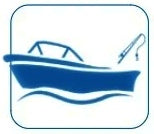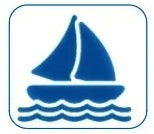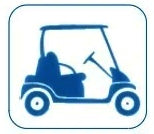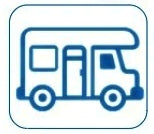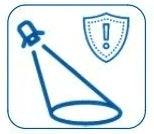Product successfully added to your shopping cart
Below are additional resources to study and review in addition to our general frequently asked questions.
Can I bring the battery inside in freezing temperatures?
Yes. Even though Lithium batteries has a working temperature range from -20°C to 60°C you can bring it inside. You can order the optional Quick Disconnect feature to simply unsnap the battery during freezing conditions and bring it inside to stay warm. If you forget to bring it inside, turn on headlights for 30 seconds to warm up the battery before starting your vehicle.
Is the battery shockproof?
Yes. Although we do not recommend dropping the battery it can withstand a drop from a few feet up and still be fine because they are built with a bottom cushion.
Are there different form factors for all applications?
Yes. We have a different form factors for our battery products including flat, wide, tall, thin, etc. If there is a custom form factor feel free to contact us and we might be able to make a custom battery for your application.
How do I estimate a pricing for a starter battery?
Different starters pull a range of current to start the engine on hot and cold days. This will determine the Ah size pack you need which will determine the price. If you have a clamp-on ammeter, simply put it around a battery cable and turn the engine over; you will read the actual amps required. Do this 3 times to get the highest reading.
Do I need a BMS/circuitry to protect the battery from under voltage events?
Yes, only IF you have a bad habit of leaving the headlights on or have a constant power drain from an alarm or some other drain after the ignition is turned off. Optional BMS is $100 extra for M cycles - $200 extra for cars.
What if I did not get the low volt protection and I accidentally drained the battery?
It depends on how low the voltage got and how long it stayed there for. The battery might be recoverable with a Lithium charger.
What materials do you use in construction of the battery?
Copper is used for cell connections and terminal post leads. Brass is used for the terminal posts.
What if my cables are not long enough to reach a small battery?
If your cables are not long enough you need "rabbit ears" battery lead extensions. They can be purchased from us at +$25.
Should I replace my batteries in my jet skis, ATVs, motorcycles, airplanes, etc.?
All powersports vehicles and planes can benefit from a Lithium replacement. Contact us at Aegis Battery to further discuss your options.
Is there any warranty for your batteries?
Aegis Battery will provide a three year, pro-rated warranty (drained dead battery not covered).
What size battery does my vehicle need?
The size of the battery depends on the current needed by the starter when cranking the engine.
4 cylinders - 7Ah . . . 6 cylinders - 9Ah . . . . 8 cylinders - 11.5Ah
Examples are provided on the sizing page.
How can such a small battery run my lights, stereo, etc.?
The battery does not run the lights, stereo, etc.; the alternator provides the power for those devices.
Are there batteries for all motorcycles?
Yes, our batteries will work for all motorcycles.
Do you have a battery for all car makes currently in the market?
Yes, our batteries will work for all cars currently in the market.
Will this battery work for all plane models?
Yes, the battery will work equally well for all plane models.
How do your batteries compare to Shorai batteries made in China?
Shorai batteries have a lower discharge rate than our batteries. You also can’t contact them directly when you have any issues with your batteries. The final thing is that the battery terminals are made of steel which is flimsy because it is inexpensive compared to copper and brass. Although the batteries from Shorai are cheaper it is not as safe and reliable as our batteries.
Part 4
How well do Aegis Battery batteries work in Snowmobiles and Watercraft?
Our batteries work great in these application due to the extreme weight loss but are recommended strictly for Performance or Race use due to some of the issues with cold weather for Snowmobiles, and with Watercraft, the fact of the direct drive starting system that needs more cranking power to turn over. THEY ARE NOT RECOMMENDED FOR FREE-STYLE JET SKI USE!
For use in Snowmobiles the fact is that all Lithium Batteries have what is called “Cold Lag”… when lithium is extremely cold it will suffer from initially sluggish performance until it is warmed up. The battery self-warms with short start attempts by discharging amperage which causes it to self-warm and soon get its full power back, but it must be pointed out that Snowmobiles are often ridden in these extreme temperatures and must consider this Cold Lag issue. We recommend a minimum of 1 to 2 sizes larger for use in Watercraft of Snowmobiles, but please contact us for more information in determining what will work best for you.
Are there any concerns regarding these batteries?
If you are using the smallest battery possible for your bike to save weight (for example, for racing use a 4-cell in a 600cc bike, or an 8-cell in a 1000cc bike) you may find in 50 degree weather and below it may be sluggish initially. But with each attempt to start the battery actually warms itself from the amp discharge and gets back its full strength. If you often ride in weather below the 50s we recommend going up one or two sizes on the battery, this will give you more cranking amps to get power even if it’s very cold.
You can ruin the battery if you let it drain to below 10.5 volts!!! This is true of ANY battery, lead/acid or lithium. Draining a battery to this level will damage the battery cells. This is not a concern if you remember to turn off your ignition, or turn off any accessories that are not ignition switched and monitor your battery is you plan on not riding frequently. You should also make sure your vehicle does not have a “parasitic drain” or “short circuit”. A “parasitic drain” is something like an accessory that is pulling energy from the battery even though the ignition is “off” this can drain your battery below 10.5V and ruin it if you store the bike or don’t ride it to keep it charged. Sometimes a short can also be the cause of a drain on the battery though all accessories are “off”. For the best battery life you should monitor your battery and if you do not ride for a time make sure you disconnect the battery or put it on a lithium maintenance charger.
Also important is that OVER-CHARGING above 14.8V can damage Lead or Lithium batteries. For this reason older bikes should make sure their electrical system and specifically the Voltage Regulator is operating correctly or you will find yourself damaging your batteries if your bikes charging systems voltage to the battery is going above 15V.
DO NOT ABUSE the battery. These batteries express extremely high amperage and can get over-heated if you keep cranking a bike repeatedly over 7 seconds multiple times in a row. Though they are made to start your bike with fantastic results they can become over heated if you keep trying to crank a bike that just isn’t starting.
How do I choose the correct battery?
Feel free to contact us at Aegis Battery to choose the best battery for your application.
How do I charge the battery?
The Aegis Battery batteries come ready to install, and start the bike/vehicle. We do offer a specific “smart” Lithium battery charger that is specifically for charging LiFePO4 batteries. We have a 4-amp and an 8-amp charger as well as 2 Optimate Chargers. All will charge the battery to its intended peak voltage and will shut off when the battery is charged. You should NOT use an automobile or motorcycle charger that is specific to lead acid batteries! They can cause damage to the batteries because they charge in a different way than a specific LiFePO4 charger. They often have a desulfinate feature or over voltage “Quick Charging” feature, both of which will damage LiFePO4 batteries. Lead acid chargers in many cases will overcharge a lithium battery, ending up in damage which is not covered under our warranty.
What is the range of voltage for the batteries?
The Aegis Battery batteries have a normal voltage of 13.2V. The battery will read up to 14.7V immediately after charging. The normal operating range will read between 13.3-14.5V. After a few hours it will self-balance to the 13.3-7 range which is its normal state of charge. The maximum voltage the battery should be exposed to is 14.7V. On the lower end of the voltage range the battery should be put on a charger if the battery voltage drops below the 12.5V range while sitting. The voltage should not be allowed to drop below 10.5V while at rest. Permanent damage will occur below 10 volts.
I am trying to charge my battery with solar panels. If the battery pack already has the PCB/PCM protection, do I still need a solar charger controller?
Yes, even though the battery pack has built in PCB/PCM protection you do need the solar charger controller in order to regulate the voltage from the solar panels for your battery pack.
If I want to solar charge a LiFePO4/Lithium-ion battery, which already has PCB, would a normal SLA controller work fine?
For LiFePO4/Lithium-ion battery, we always recommend using LiFePO4/Lithium-ion solar controller especially if you are using the battery as an UPS (backup power supply). The Lead acid solar controller will constantly provide pulse current to the battery, in the long run, it might damage the PCB. As a result, the PCB won't be able to protect the battery when it should be. The LiFePO4/Lithium-ion solar controller won't provide constant current when the battery is fully charged which makes it much safer and more reliable.
How do I select the correct battery pack (General Knowledge)?
First of all, you must get to know your device:
What is device's input voltage? (V)
What is its power consumption (Watt)?
What is its maximum current drain (A)?
What is your expected running time with a battery pack?
Decide battery pack voltage you will choose
Battery pack voltage must be equal or a little higher than your device’s need.
If you need an exact voltage, which battery pack a cannot provide, you may consider to use aDC-DC regulator
Decide Battery pack's Capacity (mAh or Ah)
Battery capacity depends on how long you need to run your device (hours), which can be calculated as follow:
(Ah) = Device's Wattage (W) x Time to run (Hours) / Battery Voltage (V)
For example, if you’re using a 12V battery pack, and running a 10W DC device for 10 hours, you need choose a battery pack with capacity > 8.3Ah, e.g. (10x10)/12 = 8.3
1000 mAh = 1 Ah, a higher mAh will provide longer running time.
Decide Battery pack’s max. discharging current
Before ordering a battery pack, you must pay attention to the battery pack’s maximum discharging rating on the specification or description. Please don’t think any battery can take any current drain.
You should know your device’s max discharging current. If you don’t know, you must measure it with a multi-meter.
The battery pack’s max discharging rate of the chosen battery must be higher than what the device requires
Choose Li-Ion, NiMH or Lead acid battery?
All types of rechargeable battery will work for you. Question is size and weight. The table below lists the advantages and disadvantages of these batteries for your reference
Li-Ion batteries have the highest energy density (mAh/weight), and are becoming more and more popular. However, Li-Ion batteries may explode and cause a fire if not used properly. Please read our safety warning.
In current stage, we always suggest customer to use NiMH battery pack for high current application ( < 1C rate ), not Li-Ion, because Li-ion’s protection in high current application still is not matured yet
Choose a Battery Charger
Please always follow our suggestion to choose a smart charger. So called smart charger must have automatic power cut-off function when the battery is full.
Never use NiMH battery charger for Li-ion battery pack, it will cause battery to explode
Always pay attention while charging a battery, and put the battery in a fire-proof container box to avoid any accidents
Understand the risks to using NiMH and Li-ion batteries. Please read our safety warningbefore buying a battery
First of all, you must get to know your device:
- What is device's input voltage? (V)
- What is its power consumption (Watt)?
- What is its maximum current drain (A)?
- What is your expected running time with a battery pack?
- Decide battery pack voltage you will choose
- Battery pack voltage must be equal or a little higher than your device’s need.
- If you need an exact voltage, which battery pack a cannot provide, you may consider to use aDC-DC regulator
- Decide Battery pack's Capacity (mAh or Ah)
- Battery capacity depends on how long you need to run your device (hours), which can be calculated as follow:
- (Ah) = Device's Wattage (W) x Time to run (Hours) / Battery Voltage (V)
- For example, if you’re using a 12V battery pack, and running a 10W DC device for 10 hours, you need choose a battery pack with capacity > 8.3Ah, e.g. (10x10)/12 = 8.3
- 1000 mAh = 1 Ah, a higher mAh will provide longer running time.
- Decide Battery pack’s max. discharging current
- Before ordering a battery pack, you must pay attention to the battery pack’s maximum discharging rating on the specification or description. Please don’t think any battery can take any current drain.
- You should know your device’s max discharging current. If you don’t know, you must measure it with a multi-meter.
- The battery pack’s max discharging rate of the chosen battery must be higher than what the device requires
- Choose Li-Ion, NiMH or Lead acid battery?
- All types of rechargeable battery will work for you. Question is size and weight. The table below lists the advantages and disadvantages of these batteries for your reference
|
Chemistry |
Cost |
Weight |
Temp. (°C) |
Cycle Life |
Shelf Life (months) |
Volts per cell |
|
Lead Acid |
$$ |
Very Heavy |
-65 to 80 |
300 |
12 |
2.0 |
|
Nickel Cadmium |
$$ |
Heavy |
-20 to 65 |
500+ |
6 |
1.2 |
|
Nickel Metal Hydride |
$$$ |
Moderate |
-10 to 65 |
500 |
12 |
1.2 |
|
Lithium Ion |
$$$$ |
Light |
-20 to 60 |
500 |
12 |
3.7 |
|
Lithium Polymer |
$$$$$ |
Light |
-20 to 60 |
500 |
12 |
3.7 |
- Li-Ion batteries have the highest energy density (mAh/weight), and are becoming more and more popular. However, Li-Ion batteries may explode and cause a fire if not used properly. Please read our safety warning.
- In current stage, we always suggest customer to use NiMH battery pack for high current application ( < 1C rate ), not Li-Ion, because Li-ion’s protection in high current application still is not matured yet
- Choose a Battery Charger
- Please always follow our suggestion to choose a smart charger. So called smart charger must have automatic power cut-off function when the battery is full.
- Never use NiMH battery charger for Li-ion battery pack, it will cause battery to explode
- Always pay attention while charging a battery, and put the battery in a fire-proof container box to avoid any accidents
- Understand the risks to using NiMH and Li-ion batteries. Please read our safety warningbefore buying a battery


